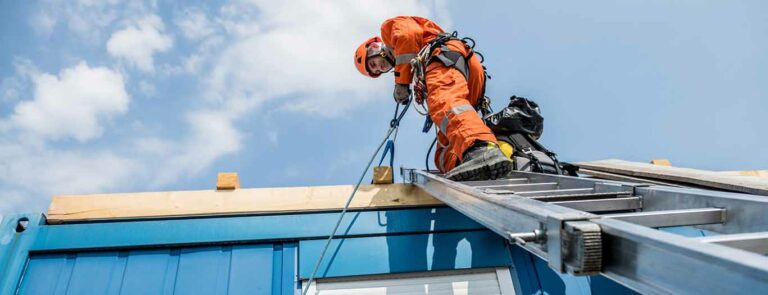Fascination About Roar Solutions
Wiki Article
An Unbiased View of Roar Solutions
In such an environment a fire or surge is feasible when three basic conditions are met. This is typically referred to as the "harmful location" or "combustion" triangle. In order to protect installments from a possible surge a method of evaluating and classifying a possibly unsafe location is needed. The purpose of this is to guarantee the appropriate option and installment of devices to inevitably avoid a surge and to make sure safety of life.
(https://www.metooo.io/u/roarsolutions)
No devices ought to be mounted where the surface temperature of the devices is above the ignition temperature of the offered hazard. Below are some typical dirt harmful and their minimal ignition temperature. Coal Dirt 380C 225C Polythene 420C (thaws) Methyl Cellulose 420C 320C Starch 460C 435C Flour 490C 340C Sugar 490C 460C Grain Dirt 510C 300C Phenolic Resin 530C > 450C Aluminium 590C > 450C PVC 700C > 450C Soot 810C 570C The possibility of the danger being existing in a focus high enough to trigger an ignition will vary from place to place.
In order to classify this danger an installment is divided right into areas of risk depending upon the quantity of time the hazardous is existing. These areas are referred to as Zones. For gases and vapours and dusts and fibers there are 3 areas. Zone 0 Area 20 A dangerous environment is very most likely to be existing and may be present for long periods of time (> 1000 hours per year) or perhaps constantly Zone 1 Zone 21 A dangerous environment is possible however unlikely to be existing for lengthy periods of time (> 10 450 C [842 F] A classification of T6 indicates the minimal ignition temperature level is > 85 C [185 F] Hazardous area electrical devices maybe designed for usage in greater ambient temperatures. This would suggested on the rating plate e.g. EExe II C T3 Ta + 60C( This means at 60C ambient T3 will not be exceeded) T1 T1, T2, T3, T4, T5, T6 T2 T2, T3, T4, T5, T6 T3 T3, T4, T5, T6 T4 T4, T5, T6 T5 T5, T6 T6 T6 A T Course score of T1 suggests the optimum surface area temperature level produced by the tool at 40 C is 450 C. Assuming the associated T Class and Temperature level score for the tools are ideal for the area, you can constantly make use of a tool with a more rigorous Department score than needed for the area. There isn't a clear answer to this concern. It actually does depend on the sort of equipment and what repair services require to be lugged out. Equipment with details examination treatments that can't be performed in the area in order to achieve/maintain 3rd party score. Should come back to the manufacturing facility if it is prior to the equipment's solution. Area Fixing By Authorised Worker: Complicated screening might not be needed nonetheless certain procedures might need to be adhered to in order for the tools to maintain its 3rd party rating. Authorized workers need to be used to do the work appropriately Repair service should be a like for like replacement. New element should be considered as a direct substitute calling for no unique screening of the equipment after the fixing is full. Each tool with an unsafe ranking ought to be evaluated individually. These are described at a high degree below, but also for even more comprehensive info, please refer straight to the guidelines.
Rumored Buzz on Roar Solutions
The tools register is a thorough data source of devices records that includes a minimum collection of areas to determine each item's area, technological specifications, Ex lover category, age, and ecological data. This info is important for monitoring and taking care of the devices efficiently within harmful areas. In comparison, for routine or RBI sampling assessments, the quality will certainly be a combination of Detailed and Close inspections. The ratio of Detailed to Shut examinations will be figured out by the Devices Danger, which is assessed based on ignition threat (the likelihood of a resource of ignition versus the probability of a combustible environment )and the dangerous location category( Area 0, 1, or 2). This variant will certainly additionally influence the resourcing requirements for job prep work. As soon as Whole lots are defined, you can establish sampling plans based upon the sample size of each Great deal, which describes the number of random equipment things to be examined. To identify the required example dimension, 2 elements require to be evaluated: the dimension of the Lot and the group of assessment, which indicates the level of initiative that need to be applied( reduced, normal, or raised )to the evaluation of the Great deal. By integrating the group of examination with the Whole lot dimension, you can then develop the suitable rejection requirements for an example, indicating the allowed number of defective things discovered within that example. For even more information on this process, please describe the Energy Institute Guidelines. The IEC 60079 standard recommends that the optimum interval in between evaluations need to not exceed 3 years. EEHA evaluations will also be conducted beyond RBI campaigns as part of scheduled upkeep and tools overhauls or fixings. These examinations can be credited towards the RBI example sizes within the affected Whole lots. EEHA evaluations are performed to recognize faults in electrical equipment. A weighted racking up system is important, as a solitary tool might have numerous faults, each with varying degrees of ignition risk. If the consolidated score of both assessments is much less than two times the mistake rating, the Whole lot is regarded acceptable. If the Lot is still thought about undesirable, it needs to undergo a full inspection or validation, which may activate more stringent inspection protocols. Accepted Great deal: The reasons for any faults are recognized. If a common failing setting is found, additional devices may need maintenance. Faults are identified by severity( Security, Honesty, Housekeeping ), guaranteeing that urgent problems are examined and resolved without delay to alleviate any type of influence on safety or procedures. The EEHA database need to track and videotape the lifecycle of faults along with the corrective actions taken. Executing a robust Risk-Based Assessment( RBI )approach is essential for guaranteeing conformity and security in taking care of Electrical Equipment in Hazardous Areas( EEHA) (hazardous area course). Automated Fault Scoring and Lifecycle Monitoring: Easily manage mistakes and track their lifecycle to boost examination accuracy. The intro of this assistance for risk-based evaluation additionally reinforces Inspectivity's position as a best-in-class option for regulative compliance, in addition to for any asset-centric evaluation use situation. If you want finding out more, we invite you to ask for a demonstration and uncover just how our option can transform your EEHA administration procedures.
The 25-Second Trick For Roar Solutions

In regards to explosive threat, a dangerous area is an atmosphere in which an eruptive atmosphere is present (or may be anticipated to be existing) in amounts that need special safety measures for the building and construction, installment and use equipment. hazardous area course. In this write-up we check out the challenges encountered in the workplace, the danger control actions, and the needed competencies to function safely
It is a repercussion of modern-day life that we manufacture, keep or take care of a series of gases or fluids that are deemed combustible, and an array of dirts that are deemed flammable. These compounds can, in particular problems, develop eruptive atmospheres and these can have major and awful repercussions. A lot of us know with the fire triangle eliminate any among the three aspects and the fire can not happen, yet what does this mean in the context of unsafe locations? When damaging this down into its easiest terms it is essentially: a combination of a particular amount of launch or leak of a certain material or product, blending with ambient oxygen, and the presence of a source of ignition.
In a lot of circumstances, we can do little about the degrees of oxygen airborne, yet we can have substantial impact on resources of ignition, for instance electrical tools. Unsafe areas are recorded on the harmful area category illustration and are identified on-site by the triangular "EX-SPOUSE" indicator. Below, among other key info, zones are split right into 3 types depending on the risk, the chance and duration that an eruptive atmosphere will exist; Zone 0 or 20 is considered the most hazardous and Area 2 or 22 is regarded the least.
Report this wiki page